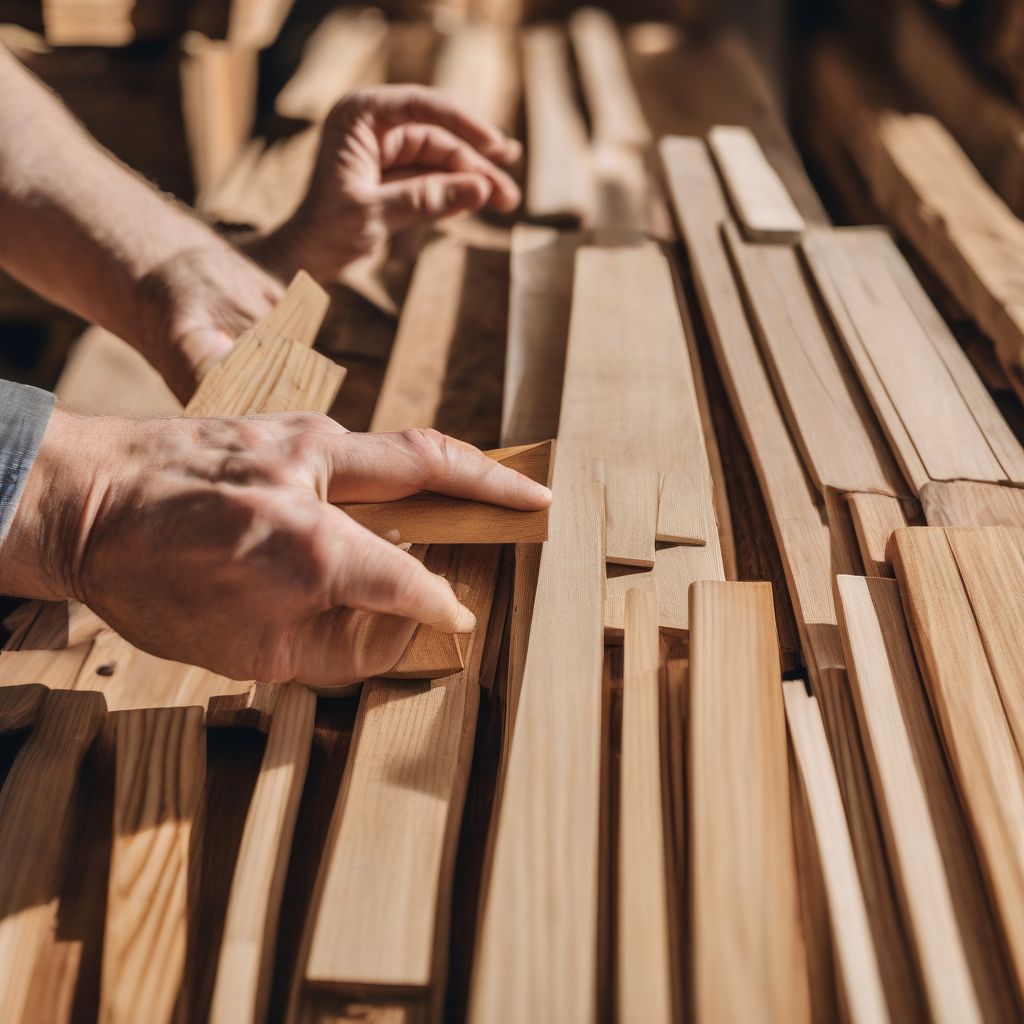“The smell of sawdust and the feel of wood grain under my fingertips always takes me back to my childhood,” my grandfather, a skilled woodworker, once told me. His words resonate deeply with me as I embark on my own crafting journey. There’s a certain magic to transforming raw wood into something beautiful and functional, a magic that’s both challenging and immensely rewarding.
Whether you’re a seasoned DIY enthusiast or just starting out, working with wood can be incredibly fulfilling. But before you dive headfirst into your next masterpiece, let’s explore some essential tips that will make your crafting experience smoother, safer, and more enjoyable.
Choosing Your Weapon: Selecting the Right Wood
Just like a chef carefully selects ingredients, a woodworker must choose the right wood for the job. Different woods have different properties, affecting their strength, workability, and overall suitability for your project.
Common Wood Types and Their Uses:
- Pine: An affordable and readily available softwood, perfect for beginner projects like birdhouses or simple shelves.
- Cedar: Known for its natural insect-repelling properties and pleasant aroma, ideal for outdoor furniture or storage chests.
- Oak: A strong and durable hardwood, excellent for furniture, flooring, and cutting boards.
- Maple: Prized for its beautiful grain patterns, often used for furniture, cabinetry, and musical instruments.
- Cherry: Ages beautifully, deepening in color over time, making it a favorite for heirloom-quality furniture.
Pro Tip: Visit your local lumberyard or home improvement store and don’t be afraid to ask questions! Many lumberyards have experienced staff who can guide you towards the perfect wood for your project.
 Choosing Wood for Crafts
Choosing Wood for Crafts
Sharp as a Tack: Essential Woodworking Tools
Having the right tools can make or break your woodworking experience. While a fully equipped workshop might seem daunting, starting with a few basic tools is key.
Must-Have Tools for Beginners:
- Measuring Tape: Accurate measurements are the foundation of any successful woodworking project.
- Pencil: For marking your cuts and making notes on your wood.
- Hand Saw: A versatile tool for making straight cuts.
- Jigsaw: Ideal for making curved cuts and intricate shapes.
- Power Drill: Essential for drilling pilot holes, driving screws, and installing hardware.
- Sandpaper (Various Grits): For smoothing rough edges and preparing your wood for finishing.
- Wood Glue: A strong adhesive for joining pieces of wood.
- Safety Equipment: Protect yourself with safety glasses, ear protection, and a dust mask.
Pro Tip: Invest in quality tools as your budget allows. They might cost more upfront but will last longer and provide better results in the long run.
Measure Twice, Cut Once: The Importance of Accuracy
In the world of woodworking, precision is paramount. Even slight inaccuracies in your measurements or cuts can snowball into bigger problems down the line.
Tips for Accurate Measurements and Cuts:
- Double-Check Your Measurements: Always measure twice (or even three times!) before making any cuts.
- Use a Sharp Pencil: A sharp pencil creates finer lines, leading to more precise markings.
- Support Your Workpiece: Ensure your wood is stable and well-supported before cutting to prevent accidents and ensure clean cuts.
- Take Your Time: Don’t rush the cutting process. Slow and steady movements will yield the best results.
- Practice Makes Perfect: Don’t be afraid to practice your cuts on scrap wood before tackling your final project.
From Rough to Refined: Sanding and Finishing Techniques
Sanding might seem tedious, but it’s a crucial step that transforms your woodworking project from rough-hewn to polished perfection.
Sanding Tips for a Smooth Finish:
- Start with a Coarse Grit: Begin with a lower grit sandpaper (around 80-120) to remove any major imperfections or rough edges.
- Gradually Increase the Grit: Work your way up through progressively finer grits (150, 220, 320, and higher) to achieve a smooth and even surface.
- Sand with the Grain: Always sand in the direction of the wood grain to prevent unsightly scratches.
- Use a Sanding Block: A sanding block helps distribute pressure evenly and ensures a more consistent finish.
Choosing the Right Finish:
- Oil Finishes: Enhance the natural beauty of the wood grain, providing a warm and durable finish.
- Varnishes: Offer a protective layer that’s resistant to moisture, scratches, and stains.
- Paints: Allow for endless creativity, adding a pop of color and personality to your projects.
Pro Tip: Test your chosen finish on a scrap piece of wood to ensure you’re happy with the color and sheen before applying it to your final project.
Conclusion
Working with wood is a journey of creativity, precision, and the sheer joy of transforming raw materials into something beautiful and lasting. Remember, every master craftsman was once a beginner. Embrace the learning process, don’t be afraid to make mistakes, and most importantly, have fun!
Now that you’re armed with these essential tips, it’s time to gather your tools, choose your wood, and let your crafting imagination soar! Share your woodworking creations and experiences with us in the comments below. We’d love to see what you create!
[amazon bestseller=”woodworking tools”]
